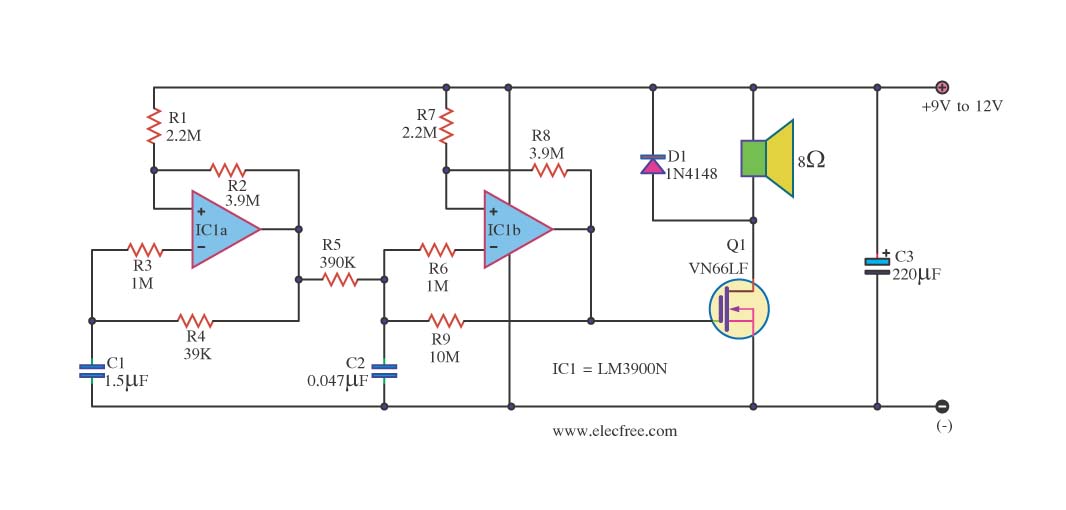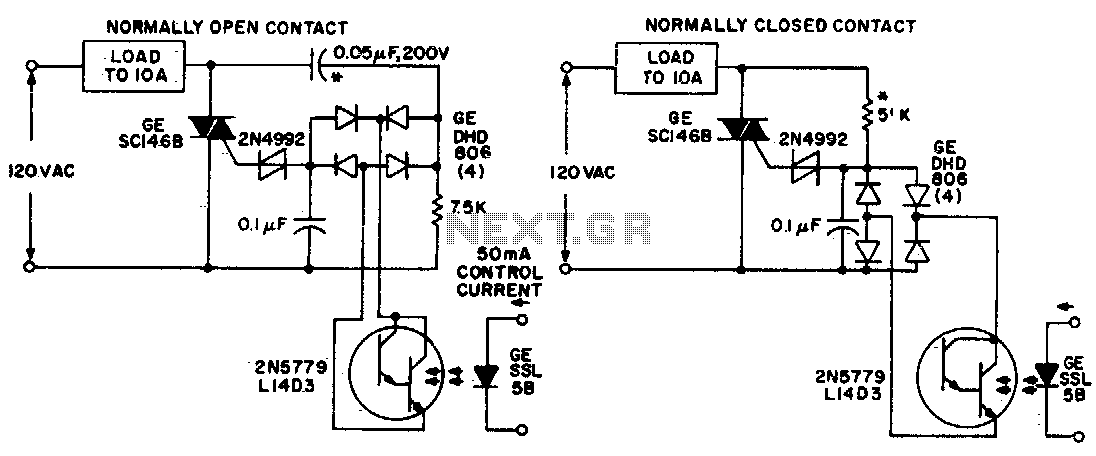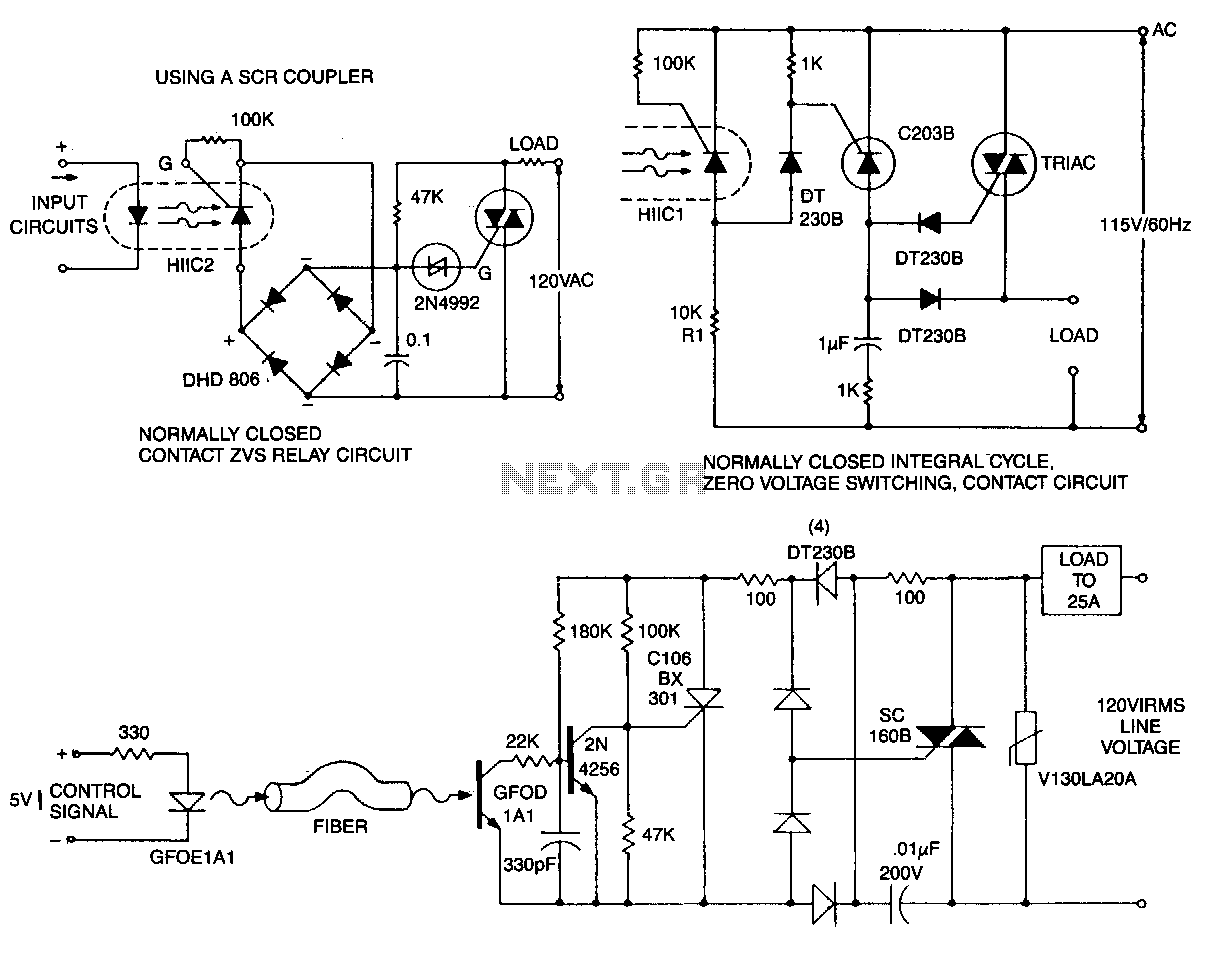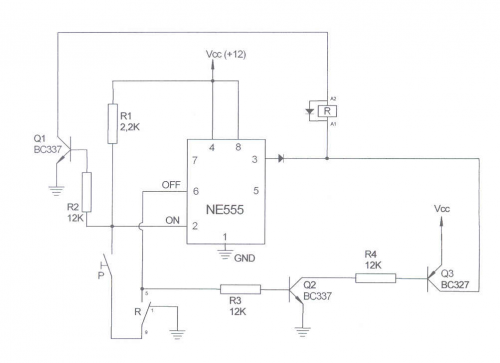
Police bicycle siren circuits

This circuit is a sound generator designed to create a super siren alarm signal using a live frequency generator circuit that incorporates an operational amplifier (op-amp). The circuit operates on the principle that when switch S1 is not pressed, no loud sound is emitted from the loudspeaker (SP1). Pressing switch S1 allows capacitor C3 to charge until the switch is released. Upon releasing switch S1, current flows through resistor R7, which limits the current entering the non-inverting input of IC1a. The combination of IC1, diodes D1 and D2, capacitors C1 and C2, and resistor R5 forms the sound generator signal circuit, which outputs a signal to pin 6 of IC1a and subsequently to pin 3 (non-inverting) of IC1b. Resistors R1 and R2 create a detector circuit to determine the signal level, which is then output from pin 7 of IC1b. This signal flows into the base of transistor Q1 (BC639), providing the necessary bias to activate Q1. When Q1 is activated, it drives SP1 to produce a loud sound until the discharge of C3 is complete, at which point SP1 ceases to emit sound.
The sound generator circuit employs an op-amp configuration to produce a variable frequency output, which is essential for generating the siren effect. The operational amplifier IC1 is configured in a feedback loop with capacitors and resistors that determine the frequency and amplitude of the output signal. The diodes D1 and D2 serve to shape the waveform, ensuring that the output maintains a specific form conducive to alarm applications.
The charging and discharging of capacitor C3 is a critical aspect of this circuit. When switch S1 is pressed, C3 begins to charge, storing energy that is later released to create the sound pulse. The resistor R7 plays a vital role in controlling the current flow to the op-amp, preventing overload and ensuring stable operation of the circuit. The detector circuit formed by resistors R1 and R2 is responsible for monitoring the output signal levels and providing feedback to maintain the desired operational characteristics.
Transistor Q1 (BC639) acts as a power amplifier, allowing the circuit to drive the loudspeaker SP1 effectively. The biasing of Q1 is crucial, as it determines the transistor's operating state. When Q1 is biased into the active region, it allows for significant current flow through SP1, resulting in the loud siren sound that is characteristic of alarm systems.
Overall, this sound generator circuit is a robust solution for alarm applications, utilizing fundamental electronic components to create a reliable and effective warning signal. Its design ensures that it can be easily integrated into various alarm systems while providing clear and audible alerts.This circuit is the sound generator super siren, for use be alarm signal get by live frequency generator circuit that use, op-amp circuit. The principle works to are while still no press switch S1 will still have no the loud sound comes out from a loudspeaker SP1.
When do pressure switch S1 then liberate C3 do something charge full until while press switch S1 and discharge go out. When liberate switch S1 come in at R7. Which perform in something limit current come in at 3 Non inverting legs of IC1a. By IC1, D1, D2, C1, C2 and R5 build be sound generator signal circuit then export come to way pin 6 of IC1a come to reach at pin 3 (Noninverting) of IC1b. By have R1 and R2 build be Dectector circuit. For do fining level has signal then signal to come out the way pin 7 of IC1b which will have flowing through comes in at pin B of Q1 for do something bias give Q1(BC639) bias.
When Q1(BC639) work then make SP1 make a noise loud come out and make a noise poor loud C3 discharge be finished SP1 then stop make a noise loud. 🔗 External reference
The sound generator circuit employs an op-amp configuration to produce a variable frequency output, which is essential for generating the siren effect. The operational amplifier IC1 is configured in a feedback loop with capacitors and resistors that determine the frequency and amplitude of the output signal. The diodes D1 and D2 serve to shape the waveform, ensuring that the output maintains a specific form conducive to alarm applications.
The charging and discharging of capacitor C3 is a critical aspect of this circuit. When switch S1 is pressed, C3 begins to charge, storing energy that is later released to create the sound pulse. The resistor R7 plays a vital role in controlling the current flow to the op-amp, preventing overload and ensuring stable operation of the circuit. The detector circuit formed by resistors R1 and R2 is responsible for monitoring the output signal levels and providing feedback to maintain the desired operational characteristics.
Transistor Q1 (BC639) acts as a power amplifier, allowing the circuit to drive the loudspeaker SP1 effectively. The biasing of Q1 is crucial, as it determines the transistor's operating state. When Q1 is biased into the active region, it allows for significant current flow through SP1, resulting in the loud siren sound that is characteristic of alarm systems.
Overall, this sound generator circuit is a robust solution for alarm applications, utilizing fundamental electronic components to create a reliable and effective warning signal. Its design ensures that it can be easily integrated into various alarm systems while providing clear and audible alerts.This circuit is the sound generator super siren, for use be alarm signal get by live frequency generator circuit that use, op-amp circuit. The principle works to are while still no press switch S1 will still have no the loud sound comes out from a loudspeaker SP1.
When do pressure switch S1 then liberate C3 do something charge full until while press switch S1 and discharge go out. When liberate switch S1 come in at R7. Which perform in something limit current come in at 3 Non inverting legs of IC1a. By IC1, D1, D2, C1, C2 and R5 build be sound generator signal circuit then export come to way pin 6 of IC1a come to reach at pin 3 (Noninverting) of IC1b. By have R1 and R2 build be Dectector circuit. For do fining level has signal then signal to come out the way pin 7 of IC1b which will have flowing through comes in at pin B of Q1 for do something bias give Q1(BC639) bias.
When Q1(BC639) work then make SP1 make a noise loud come out and make a noise poor loud C3 discharge be finished SP1 then stop make a noise loud. 🔗 External reference
Warning: include(partials/cookie-banner.php): Failed to open stream: Permission denied in /var/www/html/nextgr/view-circuit.php on line 713
Warning: include(): Failed opening 'partials/cookie-banner.php' for inclusion (include_path='.:/usr/share/php') in /var/www/html/nextgr/view-circuit.php on line 713





